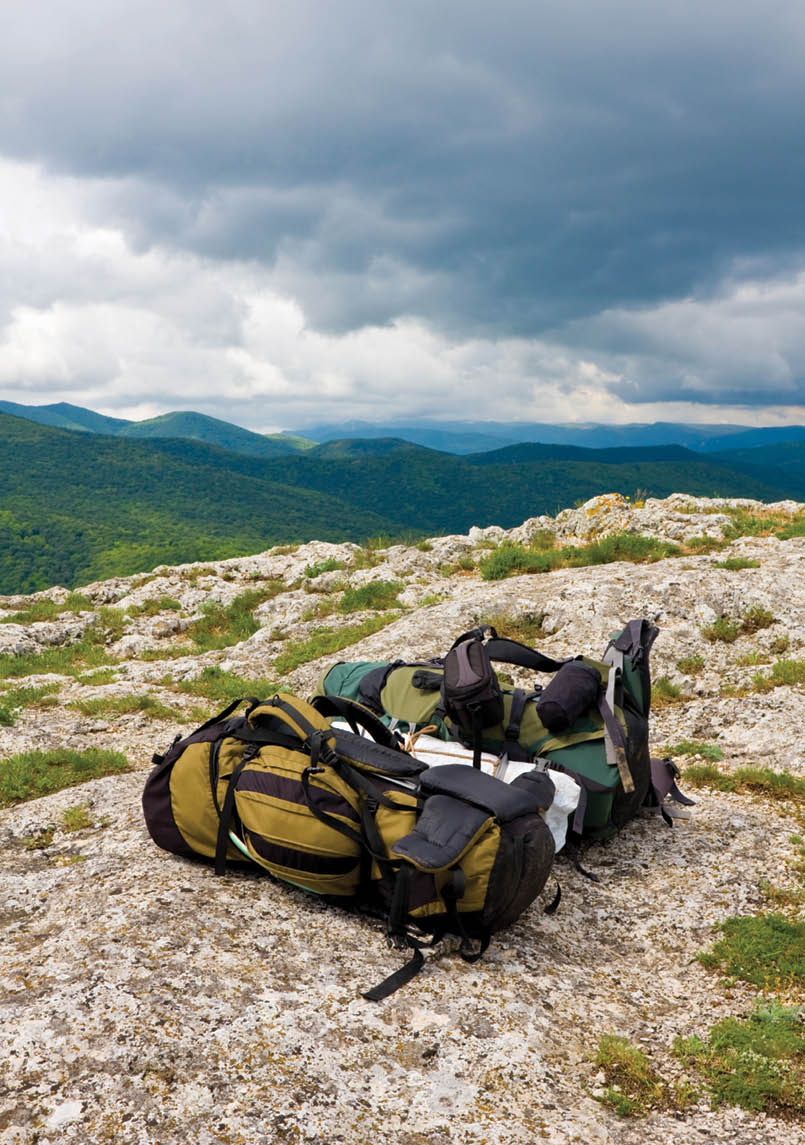

Outdoors Victoria is the peak body for all outdoor activities in Victoria. Outdoors Victoria is lobbying for the adoption of a National Adventure Activity Standard for outdoor activities, including bushwalking. Not everyone agrees.
Four views about the AAS are on the following pages:Peter Campbell is the Chairman of Bushwalking Victoria.Roger Caffin edits The Bushwalker magazine.Stephen Lake edits Bushwalk Australia, BWA.Matt McClelland has written extensively about bushwalking and is the BWA editor.
Outdoors Victoria declined to provided a written response.
Photo by Pavel_Klimenko

Bushwalking Adventure Activity Standard

Adventure Activity StandardPart 1 of 4

Adventure Activity StandardA four part series
48 | BWA October 2017

Bushwalking is a popular activity in Victoria dating back to the late nineteenth century when clubs such as the Bright Alpine Club and The Wallaby Club were formed by people interested in visiting and exploring Victoria's alpine and bush regions. The Federation of Victorian Walking Clubs, now known as Bushwalking Victoria, formed in 1934 as a peak body for bushwalkers in Victoria.
Bushwalking clubs provide safe trips from beginner levels to multi-day hikes and provide opportunities for people to gain experience with and enjoy the significant benefits of bushwalking.
The Bushwalking and Mountaincraft Training Advisory Board developed and provided training and a manual for bushwalking leaders for over 35 years. Bushwalking Victoria has operated a volunteer search and rescue section since 1949 and provides leadership training, advice and materials that contribute to bushwalker safety.
A Bushwalking Adventure Activity Standard was developed and published by the now defunct Outdoors Recreation Council in 2003. Commercial providers have been required by the Victorian Government to comply with this document to get a tour operator licence and land access permits. Volunteer bushwalkers did not support compliance with this standard applying to their bushwalking activities and the state government has not required compliance with them to date.
In 2015, Outdoors Victoria announced they would develop new national standards (AAAS) for over twenty adventure activities including bushwalking, mountain biking, rock climbing and recreational angling. Outdoors Victoria and the AAAS Steering Committee continue to insist that their “standards” must apply to both commercial and community volunteer groups. However, the AAAS do not recognise there is difference in the standard of care between leaders of volunteer groups (e.g., a bushwalking club or community group) and commercial operators providing a professional service with paying clients (e.g., guided bushwalks).
If the AAAS do come to apply to volunteer trip leaders, legal liabilities would increase, and increased insurance costs are very likely. The increased compliance burden on voluntary community organisations could lead to many clubs ceasing to operate. It would be extremely difficult for any volunteer bushwalking leaders to demonstrate meeting National Outdoor Recreation qualifications specified in the AAAS. Competency-based standards are simply not suitable for volunteer bushwalking leaders. In addition, volunteer bushwalking leaders may be refused access permits if it is deemed they don’t comply with the AAAS.
If AAAS impacts lead to reduced volunteer participation in bushwalking, this would directly contradict Parks Victoria's Healthy Parks Healthy People and the Biodiversity Strategy 2037 to get more Victorians active and outdoors.
The solution to this problem is very simple - the AAAS must state they do not apply to volunteers.
Volunteer trip leaders will continue to ensure their trips are safe by enhancing and using a variety of resources on topics including trip planning, trip management, leadership, bushcraft, navigation and handling emergencies. Bushwalking Victoria is also committed to further develop and promulgate the considerable body of knowledge that informs and guides safe and enjoyable bushwalking.
Please consider writing to your local state Member of Parliament about the impacts the AAAS may have on your bushwalking and ask them to ensure that they do not apply to volunteers. You can also sign the Bushwalking Victoria petition.

This article appeared in the September 2017 edition of Park Watch, the magazine of the Victorian National Parks Association. Peter is the President of Bushwalking Victoria.
Bushwalking Victoria's View
Peter Campbell


Adventure Activity StandardPart 1 of 4
“It would be extremely difficult for any volunteer bushwalking leaders to demonstrate meeting National Outdoor Recreation qualifications specified in the AAAS.
BWA October 2017 | 49
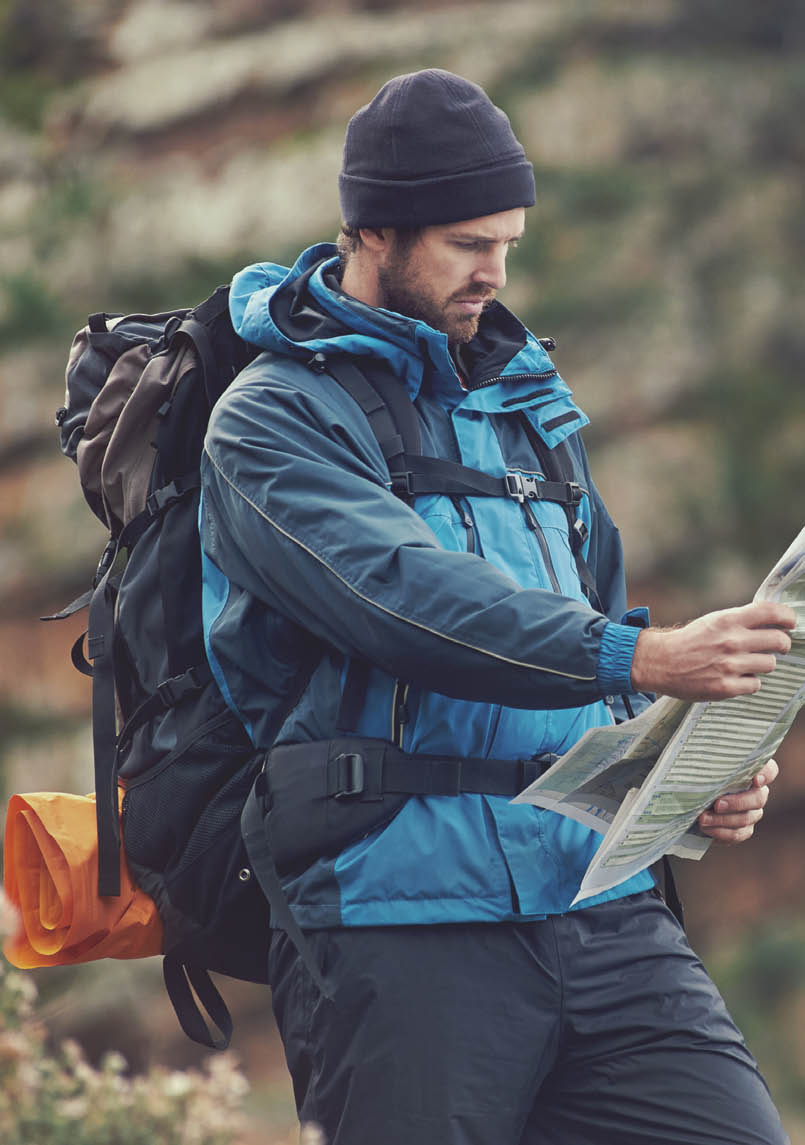

In considering the proposed Australian Adventure Activity Standards (AAS), we should start with their targets and how the AAS will affect them. There are four major groups.
Photo by Daxiao Productions

AAS: Utterly Inappropriate For Bushwalking Clubs
Roger Caffin


Adventure Activity StandardPart 2 of 4
50 | BWA October 2017

Commercial operators
These offer Adventure trips on a commercial basis, for a fee. They may be strictly compared to Guides organisations as found in New Zealand and Europe.
How the AAS applies to commercial operatorsThe idea of having some form of regulations to cover commercial operators is, at least in principle, a good one. In most countries the “laws” simply require that anyone wishing to offer “service for a fee” must belong to a recognised Guide Association of some sort. It is then up to the Guide Association to set the qualifications, and these can be very strict. The tests for guide-aspirants are legendary.
This approach, of leaving technical regulations and qualifications to the real experts (ie experienced guides who have the respect of their fellows) rather than attempting a paper bureaucracy, has an overwhelming amount to recommend it. It may well be an appropriate path for Australia to follow, and I have no reservations about it.
School parties run by a teacher or a parent
The term “school parties” should be taken to include church groups and the like. While these are not commercial, the leaders are nonetheless taking responsibilty for minors who are usually completely unskilled.
How the AAS applies to school partiesOne is loathe to place restrictions on the idea of getting kids out in the bush, but the sad fact is that a major fraction of SAR activities have always been associated with school parties. The “leaders” (teachers etc) may be enthusiastic, but they are generally unskilled in the bush and are not equipped with the knowledge to handle problems or emergencies.
This is a difficult area. I can only suggest that such parties should be led by a qualified guide, while the teachers' role is to ride herd on the kids. I realise that this could add significant cost to these activities, but it might save on SAR costs.
Photo by Sirtravelalot
“ ... the leaders are nonetheless taking responsibilty for minors who are usually completely unskilled.
BWA October 2017 | 51
Bushwalking clubs
These are groups of individuals who have joined together out of mutual interest. Membership fees are low and cover no more than club insurance, administration, and possibly the costs of room hire for meetings. There is no concept of profit in these organisations.
How the AAS applies to bushwalking clubsBushwalking clubs have been in existance for nearly 100 years in Australia, and by now they have well-developed sense how to run a club. Many of them have well-developed “rules” for who can go on what trips, based on personal assessments by older and more experienced members. In addition, such Clubs have been complying with the requirements of their insurers for a long time.
By and large, it is the bushwalking clubs which provide the members of any Bushwalker Wilderness SAR. To be sure, Police, ambos and SES (with their helicopters!) may today handle the first response, but very rarely are they searching for a club member. Yes, a club trip may call for a medivac if a club member is injured, but that is the smart thing to do.
It should be noted that most bushwalking clubs reject the concept of adventure activities. Club bushwalking trips are not treated as “adventures” with the attendant excitement. For most clubs “adventures” is the last thing they want. For most clubs safety is already the highest priority.
Casual unaffiliated bushwalkers
These do not belong to an organised or official club. They can be quite a large fraction of walkers these days.
How the AAS applies to casual walkersThis group is large, and they present an insuperable problem for any AAS. Such groups may or may not have a “leader” on any trip. Most of these walkers (aka the general public) will not even know there is an AAS, and won't pay the slightest heed to anything like that anyhow. Why should they? And no, the State will never succeed in convincing the public otherwise.
But there is a real problem here. A law which gets completely ignored is a bad law, and in general society tries to avoid creating bad laws. Having laws which everyone ignores tends to teach people to ignore all laws.
SummaryThe bottom line here is that the AAS concept is utterly inappropriate for bushwalking clubs and casual members of the public.
AAS DetailsIt is a bit hard to know where to start in detailing all the faults in the AAS. So many of the technical requirements seem to have arisen from a committee meeting run by bureaucrats who have never been bushwalking - and have never been in a bushwalking club. I entirely agree with many of the points in the article by Stephen Lake on page 52 about the stupidities.
It is in these details that we can very clearly see huge differences between commercial trips, where the customer signs up for a pre-defined “experience”, and a club trip, where the members want to go for a possibly-exploratory walk “to see what is there”. It is recognised that club members on club trips are totally responsible for their own safety at all times. The club does not accept any liability: it can't, as all members are volunteers.
It may be relevant to note that some NSW bushwalking clubs have simply dropped the idea of having organised publically-scheduled walks with a designated “Trip Leader”. Instead they now have “unscheduled” walks with someone coordinating the transport. That was partly to deal with a similar stupid NPWS requirement many years ago that organised trips in national parks must get approval weeks in advance. Mind you, I suspect that quite a few clubs have simply ignored all the hassles and gone their own way. See under “bad laws” for that.
It may also be noted that there was a push in 2009 to introduce the AAS, but thankfully it was defeated. It was discussed in The Bushwalker, Vol 34, Issue 2, Autumn 2009. It seems that some (commercial?) people won't give up easily. I have yet to understand why.
“For most clubs “adventures” is the last thing they want.
52 | BWA October 2017



My initial opposition changed during the writing of this article. One person whose views I greatly respect set me straight on a number of points. While the matter could have been managed better, and while the Adventure Activity Standard (AAS) wording could and should be improved, the main thrust is good. That said, there needs to be genuine engagement between Outdoors Victoria (OV) and those opposing the AAS or wishing to give input.
Photo by Xalanx
Let's Find a Way to Make This Work
Stephen Lake


Adventure Activity StandardPart 3 of 4
54 | BWA October 2017
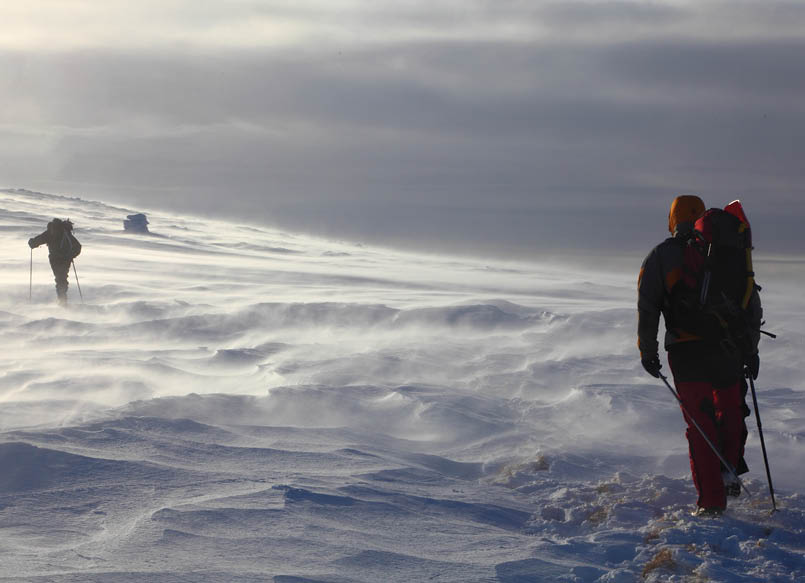
Bushwalking Victoria (BWV) is concerned about these standards, which President Peter Campbell says “have been written by and for commercial operators.” He says that “Bushwalking Victoria does not believe it reasonable or appropriate for these commercial-level standards to apply to volunteer community-based bushwalkers.”
There's a thread on this on the website AAAS impacts on volunteer community-based bushwalkers. A number of people have spoken for and against the proposal. Some AAS details require comments.
The Adventure Activity StandardThe AAS is more than just covering one's back and about legal responsibility. The primary function of standards is to prevent mishaps. To some extent, the AAS is the “brand” of bushwalking and provides a framework for quality good experiences.
Point 2 of the AAS says “AAS are written specifically for formal groups (commercial and non-commercial organisations) undertaking organised activities and are
intended to provide guidance towards satisfying the legal obligations inherent in delivering such activities.” This seems to me to be fair enough, and most people on the above thread agree to some extent. One immediate problem is that bushwalking clubs are formal groups and people are paying to attend, be it via club membership or a fee for each walk. Most bushwalking club leaders do not get paid, so a question arises – is this a commercial relationship? Does this apply to meet-up groups?
PlanningPoint 3 details trip planning. There's nothing contentious here, just the sort of things that most leaders do. Around here I started to become uneasy. While the information is similar to that which has been covered by bushwalking leader training for some time, and is or should be adopted by bushwalking clubs, in my view the format is not one that matches what bushwalking is about.
“... a question arises – is this a commercial relationship?
Photo by Inu
BWA October 2017 | 55
For example, the AAS Planning section has a heading Activity plans, which has “objectives of the activity (desired outcomes) and participant expectations”. I've been leading bushwalking club walks for decades and have never done this. Instead there's a plan, such as walking the Overland Track or climbing Jagungal. The trip details are made known, and party members come on the basis of the broad information. Commercial groups would have a similar approach in that most applicants would know something about the walk. That said, except for the easiest walks in the most friendly of weather, commercial group leaders have a duty of care to assess applicant's suitability, gear, fitness and the like more rigorously than is done by bushwalking clubs. There is also a duty of care to apprise applicants about the walk.
Not everything in the AAS has to be applicable to everyone, and this point should be addressed as a matter of urgency.
LeadersJust below this the AAS says that “At least one leader should be suitably familiar with the area being visited”. This is too general in nature. The way that trips are conducted depends on the trip type. For example, an easy day walk that will have beginners should have a lot of preparation, with the leader very sure of the trip with what many
call a survey, before the actual walk. The duty of care is higher on such trips. Alternatively, extended walks in unfamiliar terrain should have a warning that this is like an exploratory trip, so be ready for anything, with party members carefully selected.
There can only be one leader, with deputy leaders, or people who can lead should the need arise. If the leader is smart, he or she will either know or research the walk area. The leader will take note of those of similar skills on the trip, and seek their advice. I've frequently gone to places I have not visited before, including days off-tracks, no GPS, no track notes (there was no track), just a map and a compass, and on a few trips, no map in places (there was no map). How can one be familiar with long-distance walks, such as Larapinta, the AAWT, or the Bibbulmun? When I walked the Alpine Walking Track (AWT) there were track notes for just a very small portion and a lot of unknowns. Party members had walked about five days out of 30 before the trip. I made a lot of mistakes, but we survived and had an adventure. The AAS seems to say that before walking the AWT I should have walked it or read track notes. Or maybe the AAS means that when leading dependent people the leader should have walked the trip before. The level of dependency is where it becomes relevant.
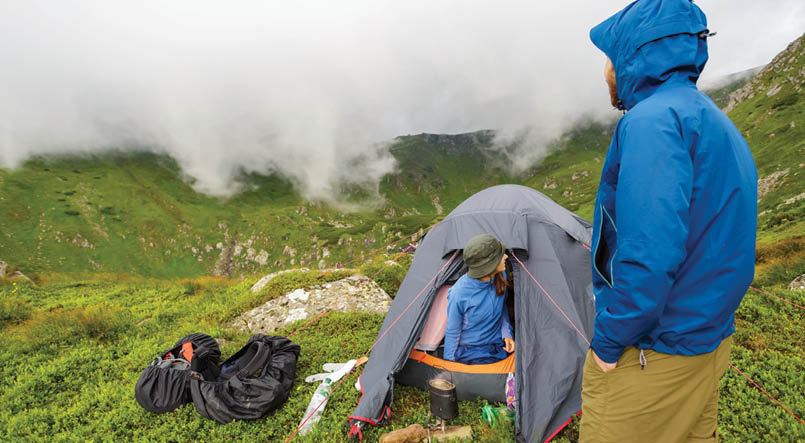
Photo by Westmarmaros
“Not everything in the AAS has to be applicable to everyone ...
56 | BWA October 2017
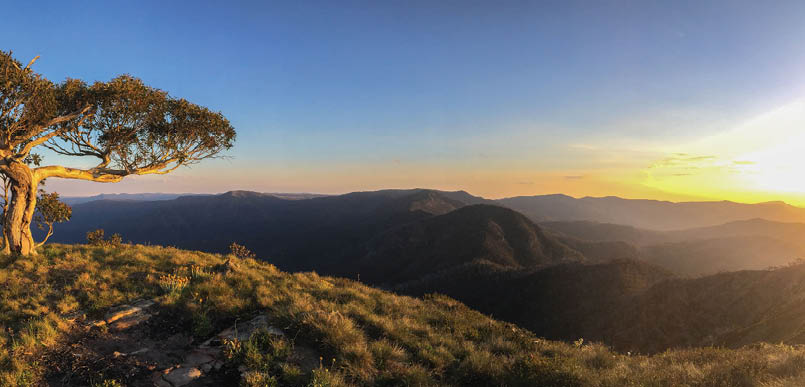
Sunset from Mt Speculation, VictoriaRobbieG
As leader I make sure that people who want to go on the walk have adequate experience, stamina and gear. This is assessed by how they conduct themselves on easier trips. A few weeks ago a friend had an overnight trip compromised by a person that was long on assurances and short on requisite skills. It happens. I said “So the rule is - disregard any stories, any BS. For harder and/or longer trips the newish person must be known to at least one other person from similar walks, if shorter and/or easier.” That is, start with easier shorter walks and progress as the person becomes known. While this is subjective it works.
Record keepingPoint 3.3 Competencies says “It is recommended that leaders keep a diary record (sic) of activities they participate in and/or are responsible for as relevant experience is also extremely important.” This is fair enough for formal qualifications, but seems to me to be unnecessary for bushwalking clubs. Some clubs have leader training, and I have instructed on these. An easier way - best used in conjunction with leader training - is to have the potential leader take over a group with the official leader close by in case things go amiss.
Note that only people with adequate experience are or should be allowed to begin leading via baby steps such as this. The potential leader does short temporary leadership stints on trips until he or she is deemed good enough to lead a trip, which
happens with an experienced person as backup. Learning to lead this way is like an apprenticeship.
It has been put to me that keeping good records is the best way to cover your back. However, most people take photographs and will have other records to show that they have been on the requisite number and type of trips. Clubs know their leaders, and if requested, should be able to evidence the experience of leaders. I was advised that “Demonstrated ability and a written record carries considerable weight with insurance companies and in court.” I agree with this, and keep contemporaneous records that have been submitted in court and peak bodies with a lower remit. Certainly keep training records, but beyond that there seems to be minimal need.
TrainingIt seems that the AAS wants to formalise standards so a person can be recognised and the organisation is protected. If a bushwalking club can provide training to the standard then a person could take that training to another club and have it recognised. The problem is that the standard may be very hard for some people to achieve. If so, then potential leaders will walk away from such training, leading trips without the backup they need.
“... only people with adequate experience are or should be allowed to begin leading via baby steps such as this.
BWA October 2017 | 57
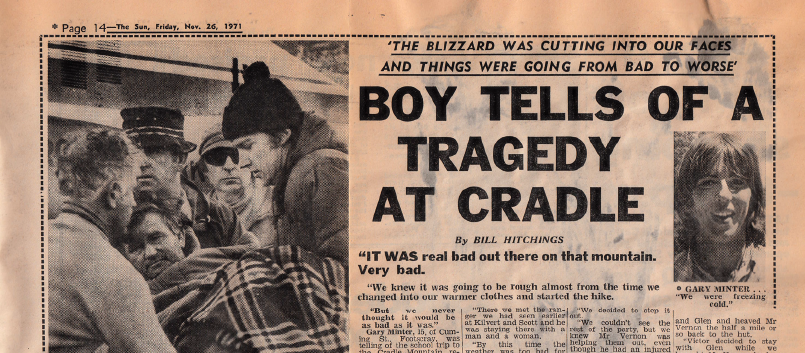

Attempting to quantify and teach all aspects of bushwalking in the manner of the AAS may not succeed. Some background. In the 1960s there were a number of bushwalking incidents in Victoria and elsewhere. In Victoria, this led to the formation of the Bushwalking and Mountaincraft Leadership Course (BMLC), starting in May 1969, based on a similar UK course. Secondary school teachers were among those participating, and it was soon a requirement that teachers have a BMLC certificate before leading school groups.
It was too late for some. In November 1971 a school party was caught by bad weather in the Cairngorms, Scotland. Five children and a leader died of exposure. In 1971, secondary student Glen Matters died at Cradle Mountain Lake St Clair National Park, a victim of poor leadership and bad weather. Too many others have died or suffered on bushwalks due to poor leadership. It's strange that BMLC funding was stopped by the Victorian Government.
Adoption of a standard criteria for leadership is useful. How it is done is contentious. If bushwalking clubs could be made responsible for training their members, with elements of the AAS selected to suit, it may work. Creating a standard, competency-based, course description would make it easier. Recognition of bushwalking clubs as trainers could then be possible.
A training accreditation course may be needed, train the trainers. These trainers and the people they teach would keep detailed records of who has done what when. Such records are a great protection for a bushwalking club.
While the BMLC and AAS material is similar, the BMLC was not quantified to the extent of the AAS. The BMLC relied on a few aspects to teach potential leaders:
A base level of skill and experience before people could be on the course;
Formal training trips over one or two years;
A mentor for all candidates; and
Several assessment trips and exams.
Similar material was covered by BMLC differently to AAS. Instead of separating the parts of leadership into very small bits, like AAS Interpret weather conditions in the field, unit code SROOPS004B, BMLC looked at candidates more holistically. This included what trips the candidate had done, and how the candidate led assessment walks.
Also, if the candidate made a mistake, the assessor might ask if the candidate has learned from this, and will do better in the future. All my candidates made minor mistakes, all were honest about these, all learned, and I marked them all accordingly – acceptable. If a candidate is fully compliant with major items and 95% compliant with the rest, “acceptable” is apt, It seems that the AAS is more rigid. Note that there were a number of people assessing candidates over a period of time.
Glen Matters, November 1971
“... it was soon a requirement that teachers have a BMLC certificate before leading school groups.
58 | BWA October 2017
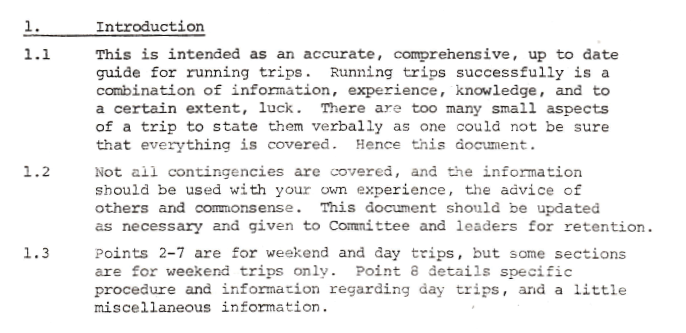
So I'm not at all keen on the way that AAS makes each aspect of leadership a separate item. Certainly mention the items – BMLC did, and I had them on my marking sheet – but not for training purposes in small segments. The AAS units take 339-588 hours, day walk leader to advanced leader, a lot longer than BMLC. Might it be that service providers seek to have courses that line their pockets? This has happened in other education areas. I could not see any provision for recognition of prior learning or experience.
The AAS and diverse groupsPoint 3.3.2 Bushwalking leader on tracked or easy untracked (easy) (sic) has a list of skills needed, including “Apply sport and recreation law” and “Follow defined Occupational Health and Safety policy and procedures”. This may not be applicable for bushwalking clubs but applies to commercial groups. This illustrates a significant aspect – the AAS is too broad to adequately cover commercial and non-commercial activities. National OHS laws do not see a difference between volunteers and paid staff, so volunteers and someone doing a similar job as an employee need to have the same safety training and equipment.
Sport? Bushwalking is not a sport. What recreation law? As far as I'm aware, the main laws that bear on outdoor recreations involve negligence, duty of care, contracts and
liability. I cannot find anything on the legal database Austlii about sport and recreation law in the context of the AAS. I was directed to NSW sport laws.
The Wrongs Act 1958 (Vic) has specific protection for volunteers in community organisations and community work. “A volunteer is not liable in any civil proceeding for anything done, or not done, in good faith by him or her in providing a service in relation to community work organised by a community organisation.” The Wrongs Act applies to clubs and what may be termed “private” trips. Even if the leader receives money for costs incurred, this clearly falls under the class of volunteer. Club fees do not constitute a contract for services because you can pay the fee and receive nothing. The Wrongs Act protects the leaders in Victoria, not the club or the the participant. The Wrongs Act does not protect leaders from negligence.
EmergencyPoint 3.6 says “An emergency strategy must be devised from the risk assessment to manage foreseeable incidents and minimise their escalation. This strategy should be documented.” This is very poor writing and evidences a total lack of understanding of a bushwalking emergency. It's not possible to document a strategy in advance, as all situations are different. In any case, if the emergency is foreseeable, then it can
A leader procedure for a bushwalking club in about 1981
BWA October 2017 | 59
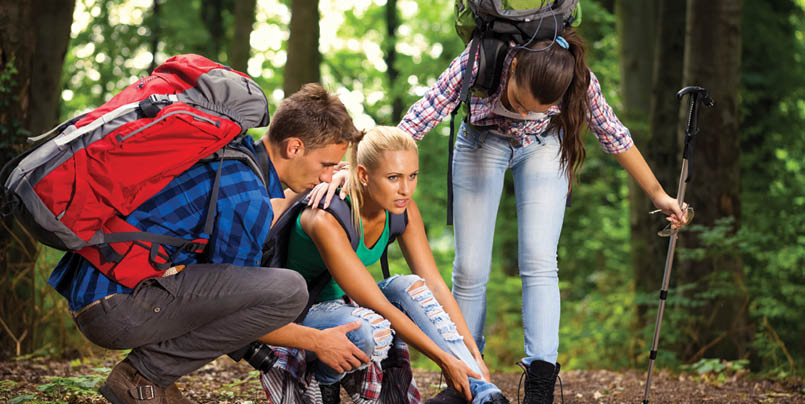
be avoided. For example, the emergency is a flooded campsite, so we will camp elsewhere. It has been suggested to me that the AAS may not explain it well enough. True. Maybe the AAS means “risk assessment to manage possible incidents.” I do not know.
A few years ago I was quite unwell, and staggered up Jagungal. On the top I realised that I needed to rest for a few days, and instantly changed the walk. There was no planning, I just knew. Leaders should have enough experience to be able to make calls like this, quickly. On another trip from a 4am start I left the group and made rapid time solo off the map to get help for an injured party member. A note was left for another person to lead the group, which he did. I broke a few rules and put a few noses out of joint, but help arrived five hours earlier than expected. My risk assessment took 20 minutes of deliberations about the worst case scenario for the party and me paid off. On another trip a party member was injured and I skied off the map, solo, reaching help on dusk. On Search and Rescue, nearly anything goes. How can there be an assessment before the trip for these sorts of things? Leaders should have skills to make these sort of decisions in a variety of situations. The ski rescue was a party of four. One person stayed with the casualty at a hut while the last person, the leader, went back to tell the rest of our group what was happening.
So the party must have enough strength, experience and resources to manage and resolve unforeseen emergencies. All parties that I have led and been in have these attributes. The leadership can also draw on others in the group whom they feel are capable and delegate accordingly. That is good leadership.
Random pointsThe detail in the AAS staggers me. For clubs a lot is unnecessary. Usually there's known people on walks, with a higher proportion of new starters on day trips than on weekend trips. An adverse incident on a day trip is manageable. Weekend trips have more experienced people who can look after people on their first weekend walks, and new people are discouraged from harder overnight trips until they are known to leaders and club regulars. It's informal and it generally works. On the rare occasions when an adverse situation arises then it can be managed satisfactorily. This may not be the case for all bushwalking clubs at all times. Assuming it will be the same each time leads to complacency which leads to disaster. There might be a pro forma gear list. Pre-trip information includes or should include a map, details of the walk, how hard it is, transport and all the rest. The AAS is a good basis for planning, but it's too formal for my liking.
Photo by luckybusiness
“How can there be an assessment before the trip for these sorts of things?
60 | BWA October 2017

I got a laugh from one section, no reflection on the AAS, which says “as a general rule, groups should be of no less than 4.” For bushwalking club trips I agree with this, but I work on a group of no less than one. I laughed louder when I read “Use established campsites. Take care not to create new ones. Otherwise camp on rock, sands, or gravel where impact is smallest.” There is a difference between how large commercial groups and smaller bushwalking club or private groups are conducted. I wonder how Outdoors Victoria wants tents to be fixed to the rock. Bolt anchors? I've camped on thousands of places that are not established. Very few of these campsites have been rock, sand or gravel, and yet I've left no trace. There's an old bushwalking saying, leave nothing but footprints, take nothing but photos. Many of my campsites have probably not been used before, like a bivvy on the summit of King Davids Peak Tasmania. This was on rock. The dawn was unbelievable. Fog.
The top of page 12 says “Keep campsites small. Focus activity in areas where vegetation is absent.” This is silly. A tent takes up a fixed amount of room, and cannot be reduced. The somewhat muddled words seem to say that “activity” (whatever is meant by this) should be on rock, sand or gravel. I cannot understand this point.
Just below this the AAS says “Protect water sources by camping at least 100 metres from rivers and billabongs.” Section 84 of the National Parks Regulations 2013 (Vic) provides that camping must be more than 20 metres from water. This is a good rule, but is impractical in many places. Instead, it's better to rely on the experience of the group to minimise riparian impact. Think about it. If the tents are close to the water then the most probable toilet areas are further away from the water. But if the tents are 100 metres from the water, people may go closer to the water for toileting. Advocating camping 100 metres from rivers and billabongs is ill-advised.
The AAS says “if they must be used, use only small amounts of biodegradable soaps and detergents”. All soaps and detergents are suss, should not be used. Oops.
Finally, the AAS has not been edited very well. There's rather a lot of typos and poor forms of words. While most people will not see these or care, a higher standard would have been nice and improved credibility.
SummaryWhile the AAS has merit, it is badly drafted and seems to be too onerous for bushwalking clubs. There's been a lack of meaningful consultation about the AAS. Adopting the AAS in a very informal and relaxed way for bushwalking clubs to achieve compliance should be a goal. The AAS is not far from BMLC. I urge all those involved to tone down the words and find a way to make this work.

Stephen has been bushwalking for over 50 years. He led what seems to be the first AWT walk, and many club and other walks since then. He was very active on rock and XC skiing. He has instructed on bushwalking club trips and was a BMLC assessor. He was on the SAR A list. Stephen sub-edits Bushwalk Australia.
An early draft of this article was sent to Outdoors Victoria for comment. OV said that there were errors in the article but declined to identify them. OV said: “I suggest it is best that you visit Australian Adventure Activity Standard. There is a FAQ area that will assist you. Additionally I encourage you to access the current drafts of the Australian AAS for Bushwalking, and there is also the Core standard that every activity, whether it be for example abseiling, horse trail riding, kayaking or bushwalking with refer to … bushwalking-camping - Your Say Australian AAS”I sent OV the above and there was no reply. I looked at the links but could not find germane information – there's a lot of pages. It's a pity that OV declines to engage with BWA. I am advised that OV did not reply in 2009 either.
“I urge all those involved to tone down the words and find a way to make this work.
“There's been a lack of meaningful consultation about the AAS.
BWA October 2017 | 61
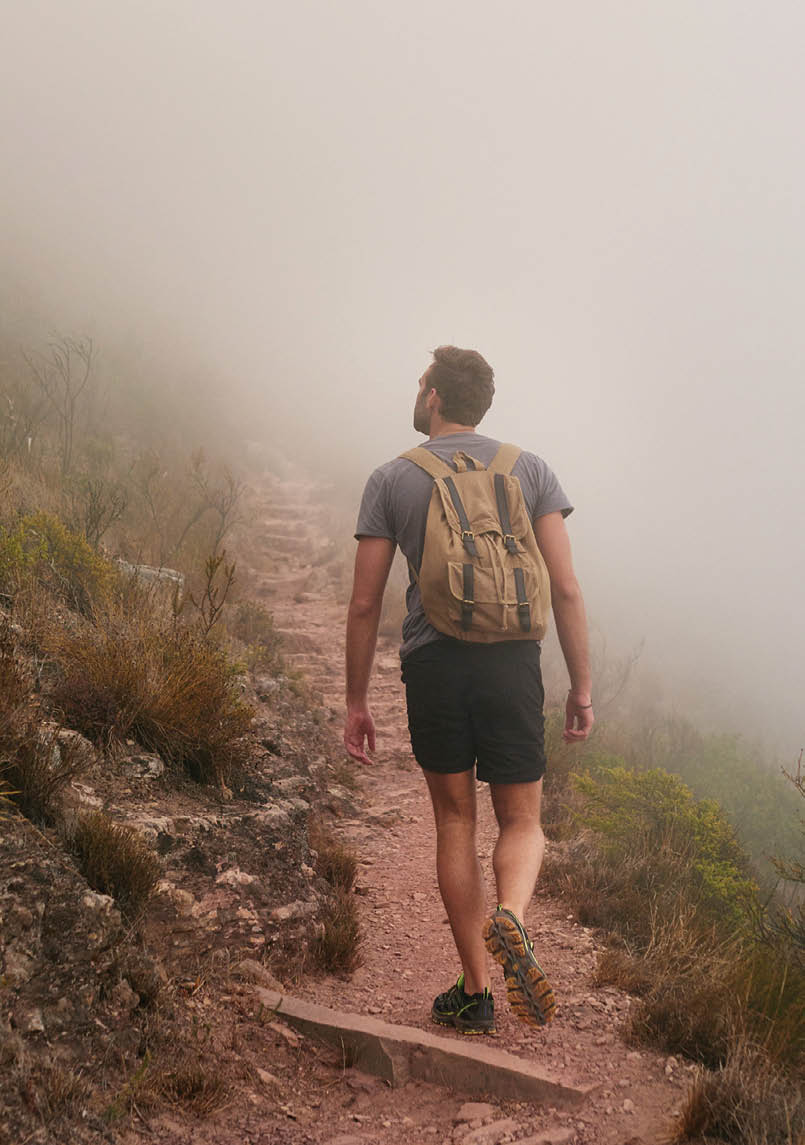

The fear from Bushwalking clubs regarding the Adventure Activities Standards (AAS) has been around for nearly a decade now. This fear and avoidance of these standards is undermining the value of bushwalking clubs and doing a great disservice to the next generation of bushwalkers.
Photo by Marvent

Why Bushwalking Standards Are Good
Matt McClelland


Adventure Activity StandardPart 4 of 4
62 | BWA October 2017

Why bushwalking standards are goodMuch of the debate for bushwalking clubs around the AAS seems to have focused on whether or not the standards should explicitly apply to “volunteer” organisations such as bushwalking clubs. Much of the debate I have heard focuses on detailed definitional arguments, rather than if the concept of standards are a good idea or a bad idea. To me, the debate should be how do we make the AAS work well for the the whole outdoor community, including clubs - that is a debate that excites me.
In this article, I want to show that standards are not to be feared, that they are inherently good and should apply to all people and organisations, whether paid or volunteer. The standards should allow for context specific variation. For example, the requirements for leading a bushwalk vary depending on the walk grade, remoteness, skill of participants, climate, equipment, etc.
Bad standards exist - don't get me started on them - but they are usually bad because of a poor development process (usually from leaving out core groups), leading to a standard that does not reflect the whole community expectations. A few bad standards do not make the idea of standards a bad thing.
It seems that most bushwalking club organisations across Australia have been pushing to be excluded from the AAS, arguing that volunteer leaders should not be subject to such standards. By removing the idea of “volunteer leaders” we are removing a very important set of contexts from the standard, narrowing the community input. In time clubs may well be forced to comply to the AAS, perhaps by insurers or land managers. If the AAS is developed wholly by commercial operators, ignoring the context of clubs, then we will be much worse off. We need to be proactive and create an awesome standard that helps all bushwalkers.
Blue Breaks vista, Blue Mountains, New South Wales Mandy Creighton
“... the debate should be how do we make the AAS work well for the the whole outdoor community, including clubs ...
“If the AAS is developed wholly by commercial operators, ignoring the context of clubs, then we will be much worse off.
BWA October 2017 | 63
What is a standard?Let's all get on the same page. Standards Australia says "Standards are documents setting out specifications, procedures and guidelines. They are designed to ensure products, services and systems are safe, reliable and consistent."
Standards are developed through broad consultation and allow for context specific variations.
Consider building construction standards. We live in a country where our houses can handle big storms and do not just collapse randomly. Standards mean we all have common types of power points and light fittings. The type and level of fire resistance varies depending on the local environment and use of the building. Yet every house is unique, built for each owner as they want it.
When we walk into a house, we never have to research the builder, job and materials used to know if it is safe to enter. This is why cars, helmets, power plugs, dog food, nearly everything has a stamp on it to say what standards they meet.
Good standards make life easier and better for providers and users of products and services. Poorly created or out of date standards are a real pain in the ass.
Legal mumbo jumboI am no lawyer and honestly most legal debates do not interest me. At its heart, the law is meant to be about protecting moral obligations. The law is about we, the people, saying what are the minimum expectations we have of each other when living in a community.
Our community has an idea of “duty of care”, so we tend to think of it in legal terms, but it is a moral obligation at heart. All relationships carry some duty (obligation) of care. That duty of care may simply be not to stab our friends or it may be to provide life-saving intervention. The level of care expected varies widely depending on context and the nature of the relationships.
I do not want to spend time arguing if we owe a duty of care to others on a bushwalk, but rather, better understand how we can best care for others on a bushwalk. In some contexts, the best care is very little intervention, and in other contexts, it may mean literally holding someone's hand.
Standards are similar to laws in the sense that they are developed by experts in specific communities. However, standards are generally not legally enforceable, in that you will not get arrested or fined for not following a standard. You may, however, have a legal or moral debt to pay if something goes wrong and you are not following a closely matched standard. For bushwalkers, in some cases not following a standard may mean you are refused insurance or access to land by the land managers.
The wonderful part of documented standards is that they provide a clear framework to work within. If the standards are not written then you are left to guess and constantly debate what the community expectations are, or just stick your head in the sand and hope for the best. If we do not write the standards proactively then they get written by others or effectively get written by expert witnesses in courts following accidents. No one wants standards produced through adversarial processes; they are much better produced collaboratively.
As a bushwalking community, especially for those in clubs, we should influence the written expectation of skill and care that we provide. We will never be able to say there is no minimum community expectation on bushwalking leaders. Whether leaders are paid or not, there are still community expectations regarding the skill they have and the care they provide, even though that will vary in different contexts.
The AAS is a chance to formalise those community expectations and give clubs some guidance on how to fulfil them.
“Good standards make life easier and better for providers and users ...
“... we should influence the written expectation of skill and care that we provide.
64 | BWA October 2017

Why broad contexts matter in developing standardsWithin the clubs and other bushwalker's involvement in the AAS debate there seem to be a few key issues that keep coming up. Here are the key points as I see them.
Does the volunteer thing matter?Volunteers are amazing. Australia would be much worse off without volunteers. When the SES turn up to remove the tree from my roof, even though they are volunteers I expect that they will be safe and not fall through my ceiling. If I scrape my knee at the football I expect that the St John Ambulance volunteers will do a reasonable job cleaning the wound.
These expectations certainly increase if I pay for an arborist to remove the tree or for a doctor to dress my knee. Notice that while my expectations increase, the minimal expectations are the same.
Formal agreed standards help clubs, participants, commercial operators and others better understand what these expectations are.
So, yes, the volunteering thing matters. Volunteering is such an important part of the bushwalking community that without their voice in it’s creation, the AAS will be considerably worse off.
Clubs cannot afford the training costs!If the clubs cannot afford the training requirements then the standard most likely needs fixing as it does not match community expectations. If the community expectations are higher than those of the clubs, then the standard should provide a mechanism to determine more affordable training options.
First Aid training is an interesting example of this. The current AAS suggests that at least one leader in the group must have first aid qualifications, varying with remoteness. Formal first aid training can be costly. For clubs the standard could
Photo by amriphoto.com
“Volunteering is such an important part of the bushwalking community that without their voice in it’s creation, the AAS will be considerably worse off.
BWA October 2017 | 65
be more open and say that for walks in more urban locations then someone in the group should be able to demonstrate specific knowledge of first aid.
If during the building the standard you discover that the community does expect formal first aid training in club settings, then the standard creates opportunities for clubs to apply for volunteer training grants.
The point is that we need to be involved in setting the understanding and standards.
Clubs lead experienced members, not newbies, like commercial operatorsI have heard the argument that clubs are different in nature from guided walking groups because club participants are experienced bushwalkers. I assume that most clubs trips have more experienced walkers than most commercially guided trips.
Not everyone who joins a club is an experienced walker, so there are going to be some club members with little if any experience on at least some walks. Different clubs have different ways to manage this.
This argument does not suggest that no standards or community expectations apply, but rather that the current draft standard does not suit club's needs. Clubs provide a clearly different context that the standard needs to recognise and work within. For example, the standard currently focuses mostly on leader's requirements, but perhaps in some contexts should also focus on how participant experience impacts on leadership requirements.
Clubs are just a group of friends, aren’t they?Some people have suggested to me that since clubs are just a group of friends then standards like this do not apply.
You know me well enough by now that I obviously disagree on a few layers here. Firstly, community expectations still apply with friends and therefore a formal standard can help define those expectations.
My main issue with this line of argument is that clubs are more than a group of friends. A club is a group of people dedicated to a cause or activity, in our case, bushwalking. Most of our time as clubs should be out enjoying the pursuit and helping others enjoy it as well. If as a group we are dedicated to bushwalking then we should also be dedicated to the furtherment of the pursuit. Each club will have a different focus on this, whether it is land protection, promotion of Leave no Trace principles, documenting and mapping, advocacy etc. Whatever we do, we should be starting with a clear understanding of the broader community expectations. We should also be involved in influencing those expectations.
In the past five years we have seen a massive rise in the number and activity of less formal bushwalking groups, namely the “Meet up” style groups. My experience of these groups is limited, but I have seen leadership ranging from very good to atrocious. Community expectations still exist for these groups and I would argue that members of formal clubs should attempt to influence establishing the AAS to protect the brand of bushwalking clubs and to help these less formal groups to thrive on their trips.
We will never get people to lead if they need a degree in bushwalkingOhh, it frustrates me greatly when people exaggerate the demands that standards place on people and groups. If as a community we expect leaders to have a doctorate in bushwalking then fine, that is our expectations. If standards are community expectations (as set by the bushwalking community, considering the wider community), then they are our expectations.
“... we need to be involved in setting the understanding and standards.
“... the current draft standard does not suit club's needs.
66 | BWA October 2017
If these expectations are higher than we currently provide, this can be seen as an opportunity to attract leaders. Clubs can become the training ground for commercial operators.
I get that some people are sick of training and jumping through compliance hoops, but this is kind of the point. If clubs are included in setting the standards then we can define those hoops and make them good for clubs, leaders and members. Training does not have to be painful, time consuming and boring. I have studied outdoor education, I have worked commercially in the outdoor education and recreation, I have run training workshops and worked with clubs. I still have a lot to learn and look forward to good and helpful training.
I suspect that clubs who develop a culture of continuous learning for leaders and members will do far better at engaging people then those that do not.
Why are clubs fundamentally better off with standards?It is clearly my belief that bushwalking clubs would be fundamentally better off if specifically included in the AAS.
The AAS:
helps set clearer expectations for members;
establishes minimal pathways for becoming leaders;
helps leaders provide an experience that meets community expectations;
enables clubs (and peak bodies) to provide appropriate training pathways;
increases communities' perceived value of bushwalking clubs;
allows broader participation of leaders (and members) in other activities by allowing transfer of recognised skills (such as helping on SAR) etc; and
makes it easier for leaders to co-lead, transfer between clubs and become commercial leaders more easily.
These do come at a financial, time and emotional cost.
Standards are simply the formal writing down of the basic community expectations of the service we provide. We may not like that it seems too professional or formal for our pursuit but the standards are being written regardless. I feel that bushwalking clubs, especially groups that represent bushwalking clubs in Australia should be leading the way here. A good standard will improve bushwalking generally, make managing a club easier and make leader's responsibilities clearer. Instead of pulling out of the AAS development process, bushwalking clubs and associations should be leading the way to ensure that bushwalking clubs thrive into the future.
Please note that this article is simply my point of view and is not representative of the views of any organisations of which I am a member or where I consult.
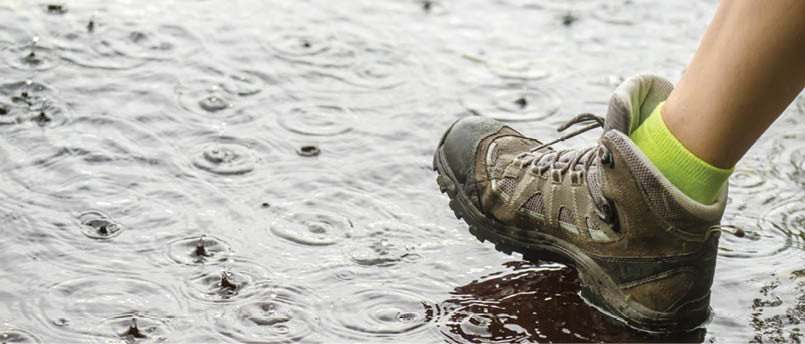
Photo by Koldunova
“... clubs who develop a culture of continuous learning for leaders and members will do far better at engaging people ...
BWA October 2017 | 67